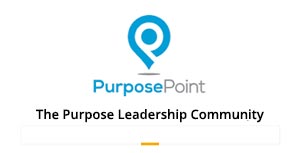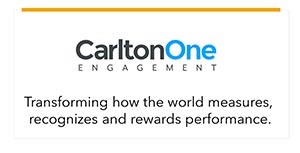Channel Engagement: Trust, Holistic Design, Impact Measurement Essential
.png) This recent Enterprise Engagement Alliance YouTube show on the latest trends in channel engagement suggests that many organizations continue to overlook the best ways to optimize sales through distribution partners. Here is the state of the market from the perspective of three veterans in channel advisory services, market research, and marketing strategies and tactics.
This recent Enterprise Engagement Alliance YouTube show on the latest trends in channel engagement suggests that many organizations continue to overlook the best ways to optimize sales through distribution partners. Here is the state of the market from the perspective of three veterans in channel advisory services, market research, and marketing strategies and tactics.Click here to subscribe to the ESM weekly e-newsletter.
The key to engaging channel partners is to establish a strategic and systematic distribution strategy, build trust through collaboration, help distributors build their businesses and address key challenges, tailor support based on the needs of each partner, and carefully measure both outcomes and actions.
This holistic approach and impact measurement process were covered in part in a recent Enterprise Engagement Alliance Purpose Leadership and Stakeholder Management Show on Channel Engagement Effective Practices.
Click here to listen to or watch the show. Click here for an EEA white paper on channel engagement effective practices.
Guests are:
- Paul Donehue, President, Paul Charles Associates, which provides ongoing strategy and sales training in technology, financial services, healthcare, pharma, media, manufacturing, retail, construction, hospitality, and more, with decades of experience in channel engagement.
- Rick Garlick, Visiting Professor, Penn State University School of Hospitality. He also serves as a Consulting Partner to BVA BDRC, a global research company that was recently acquired by Ipsos, one of the largest market research providers in the world. He has worked for the Incentive Research Foundation, Gallup, Maritz, and other well-known research organizations.
- Rob Legge, with years of experience working with leading brands as Vice President, Consumer and Channel Marketing, EGR International, a New York based engagement agency.
Channel Engagement Trends and Effective Practices
The panelists agree that despite the challenges of selling through distribution partners, whose loyalty is almost always first to their own businesses, it will remain a viable option in many business and consumer industries for at least decades to come. In fact, they say, a lack of knowledge and training, and minimal demands from senior management for clear return-on-investment measurement, has led to a general ad hoc approach to channel engagement. Many organizations tend to run similar programs year after year as long as sales are on the right track and engagement surveys come back with satisfactory results. Equipped with better return-on-investment and impact metrics, the panelists agree, organizations might be more inclined to implement a truly strategic approach.A changing landscape due to e-commerce and disintermediation. The relationship between manufacturers and channel partners is evolving, notably because of e-commerce and the growing shift towards direct relationships between consumers and manufacturers and the consequential loss of trust between distribution partners and manufacturers. This in turn creates an atmosphere in which large distributors or retailers especially want much more control over the programs manufacturers wish to throw at them in terms of training, communications, marketing, sales support, etc., observes Legge. Garlick notes that this can also create an opportunity for savvy brands that figure out how to help distribution partners protect themselves from disintermediation by identifying better ways to add value.
A strategic, holistic approach is critical yet not the norm. A surprising number of organizations lack a strategic and systematic approach to channel engagement, meaning they fail to create a formal plan based on collaboration with all stakeholders to develop a clear purpose, goals, objectives and value proposition for the channel engagement effort. Rather, many develop ad hoc promotions, incentives, and training programs that benefit the brand more than the distribution partner. Donahue attributes this to a general lack of understanding at the C-suite level about the degree to which distribution partnerships can support a successful sales and marketing strategy.
Collaboration builds trust and enhances results. Actively involving distribution partners in your planning not only results in better outcomes; it helps build trust. Suggestions include involving distribution partners in annual planning and in quarterly update meetings, making sure to give voice not only to the top 20% of distribution partners but representatives of the others as well.
A sense of purpose. Distribution partners are people too, especially their salespeople. Look for ways that your brand uniquely addresses a business need, no matter how trivial it may sound to people outside your field. Any time a product or service can help a customer can be a source of pleasure and meaning for employees who deliver the product or service. Technology firms are adept at helping solution providers create businesses helping clients use those technologies to achieve their goals and objectives.
A focus on value creation. Every marketing and sales support tactic should be looked at through the lens of how it creates value for the distribution partners and the customer, rather than simply a reflection of what the company wishes to sell. Value is created, Legge notes, by helping the distribution channel build a particular category, not just by selling the brand’s own products. Or, says Donehue, by helping with the often-overlooked need for sales training. For complex sales, digital marketing simply isn’t enough, he says. Capable people are critical to building trust, closing sales, and maintaining relationships.
One size never fits all. Understand that each distribution partner has different goals and objectives and challenges. Make your tactics flexible to address different priorities or challenges, Legge stresses.
Tailored support. Establish a formal communication plan for each distributor, whether it be face-to-face, by phone/video, e-newsletter, and make sure the meetings with them focus on listening, not selling, everyone stresses.
Metrics and impact measurement. With channel engagement, it’s generally easy to measure the outcome in terms of sales, repeat business, sales per order, productivity, even customer acquisition costs and overall profitability per customer. Even more important is to understand what is precisely driving sales—is it the co-op marketing program, the incentive trip, communications, training program? It’s easier than it sounds. Track the activities as well as the outcomes, so that you can correlate actions with results.
Enterprise Engagement Alliance Services
 Celebrating our 15th year, the Enterprise Engagement Alliance helps organizations enhance performance through:
Celebrating our 15th year, the Enterprise Engagement Alliance helps organizations enhance performance through:1. Information and marketing opportunities on stakeholder management and total rewards:
- ESM Weekly on stakeholder management since 2009. Click here to subscribe; click here for media kit.
- RRN Weekly on total rewards since 1996. Click here to subscribe; click here for media kit.
- EEA YouTube channel on enterprise engagement, human capital, and total rewards since 2020
 Management Academy to enhance future equity value for your organization.
Management Academy to enhance future equity value for your organization.3. Books on implementation: Enterprise Engagement for CEOs and Enterprise Engagement: The Roadmap.
4. Advisory services and research: Strategic guidance, learning and certification on stakeholder management, measurement, metrics, and corporate sustainability reporting.
5. Permission-based targeted business development to identify and build relationships with the people most likely to buy.
Contact: Bruce Bolger at TheICEE.org; 914-591-7600, ext. 230.














